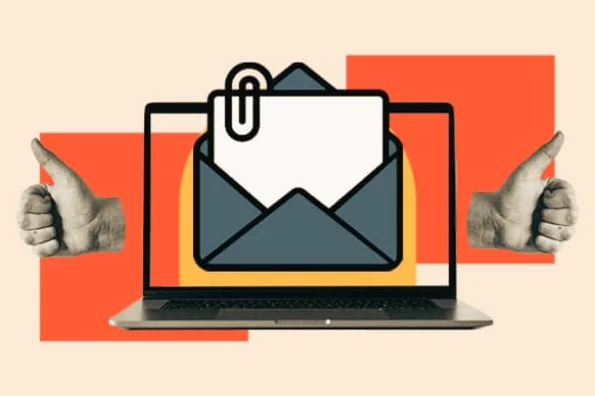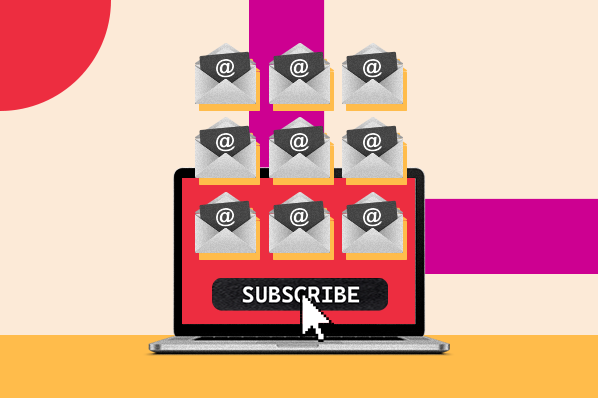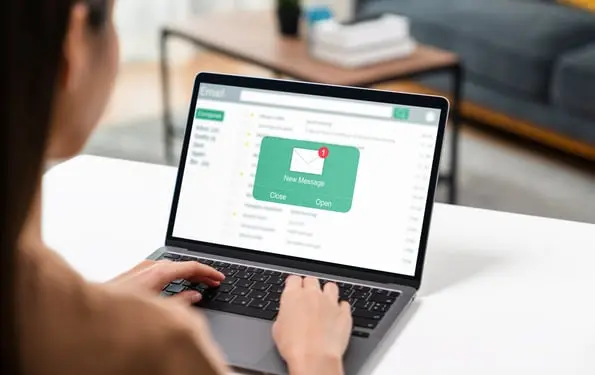It’s no secret that email marketing is a critical component of the inbound methodology. After all, why work so hard to build up a database of leads if you never do anything with them? An email campaign can be a very successful approach to nurturing leads through the funnel if you take the time early on to outline a solid strategy.

Like most digital citizens, you’ll probably start off by doing some online research around email marketing. If other marketers have seen success with this method, it’s likely that you’ll want to figure out what worked for them.
Unfortunately for your research, just about anybody can pass themselves off as an expert in this modern age of digital marketing. While there is certainly a great deal of good advice available on the internet to help you improve your online marketing efforts, there is just as much bad advice out there that could potentially derail your hard work if you’re not careful.
On the other hand, it’s not always a case of pseudo-experts publishing inaccurate information. There are tons of outdated articles out there, in which case something that used to be effective just doesn’t work anymore.
To help you sort out the good email marketing advice from the bad, I’ve put together a list of real life “tips” I found on the internet that actually don’t work at all.
1. Send Your Message From a Reputable Email Marketing Provider to Avoid Spam Filters
“I send all my emails through MailChimp, so I can say basically whatever I want and it won’t end up in the spam folder because MailChimp! Right?!”
Wrong! While it’s true that you should coordinate your email efforts through a reputable email marketing provider to reduce the chances of getting blocked, you cannot rely on that fact alone to guarantee your emails won’t get stuck with a SPAM label. If you don’t want the spam filter to block your messages, then don’t send spammy emails!
2. Focus Most Your Efforts On Creating a Great Subject Line
“So if I spend all my time crafting the most clever subject line ever, my open-rate will be off the charts! Right?!”
Sure, that could be true. You could end up with the best open-rates the world has ever seen. However, if you spend very little time on the content – the actual meat of the email – your click-through rates will be in the toilet and your unsubscribe rate will skyrocket.
Your subject line should be a reflection of the time and effort you’ve poured into the content to ensure recipients are getting what you’ve promised them. It’s definitely an important component of a successful email strategy, but it’s not the most important and, therefore, doesn’t deserve the bulk of your focus.
If you’re not sure where to start when it comes to creating compelling subject lines, you can check out this post for some ideas and inspiration.
3. Utilize As Many Beautiful Images As You Can
“I read that 40% of people respond better to visual information than plain text information, so I should send emails chock full of spectacular images, right?!”
I agree that it sounds like a good idea given the popularity of social giants like Instagram and Pinterest. However, most email administrators turn images off in emails so that the user must download the images themselves. That extra step means that nearly 45% of those that actually open your email won’t ever see your images.
That also means that placing your call-to-action within an image is a terrible idea. Even if you use alt-text properly behind the images (definitely a good practice!), chances are good that your recipients will miss your message completely!
4. Continue to Send Similar Content After a User Has Downloaded an Offer
“Someone came to my website and downloaded a whitepaper about multi-factor authentication, so I should continue to send content specific to that service, right?”
While it might seem intuitive to frame your follow-up email marketing around the first ebook or resource a visitor downloads, there is no way to know where their actual interest lies without doing a bit more digging. If you are overly presumptuous in the content you send your contacts, they could become frustrated and, ultimately, unsubscribe.
So how do you learn more about brand new contacts? There are a couple of ways. One, you could wait for them to download additional resources before you determine the content you continue to send them. Or two, you could send them opportunities to tell you what else they might be interested in. Emails with multiple offers or short surveys can be a very effective way to learn more about your contact base.
5. Appeal to Potential Subscribers With a Deal They Can’t Pass Up
“I need to reach more people with my email messages, so I should pitch new subscribers an offer they can’t resist, right?”
Tempting as this strategy may be in growing your database, keep in mind that attracting the wrong visitors – those that aren’t a good fit for your product or service – to your opt-in conversion point will only hurt your efforts. Like most inbound marketing strategies, quality trumps quantity when it comes to email marketing.
Instead, try offering an actual resource that the RIGHT visitor can’t pass up.
6. Choose a Single Opt-In Approach Because It Helps Capture More Contacts
“The first article I read mentioned I should definitely just use a single opt-in method for growing my contact database, so that’s what I should do, right?”
Sure, you could certainly do that. There are obviously advantages to that approach, like a higher conversion rate from prospect to subscriber. If you’re playing the numbers game, then that could mean higher profits ultimately.
However, you shouldn’t take that approach simply because an article suggested it, especially if the article didn’t mention the disadvantages of the single opt-in approach. The thing about making it incredibly easy to become a subscriber with a single opt-in is that your mailing list could fill up with mistyped email addresses or people who never actually wanted to be on your list due to bots or ill-intended folks.
Of course, these aren’t necessarily reasons to go the double opt-in route either. When it comes to your mailing list, it’s a good idea to test each approach for a period of time, analyze the results, then move forward accordingly.
If you want to read more about the pros and cons of each approach, check out this article for a holistic view. Simply choosing a direction for your strategy based on something someone on the internet said is never a sound reason.


![Creating an HTML Email: The Design Guide You Need [+ Free Templates]](https://blog.hubspot.com/hubfs/html%20design.png)
![Email Analytics [Research]: 8 Email Marketing Metrics You Should Track](https://blog.hubspot.com/hubfs/Untitled%20design%20%2851%29.jpg)


![How to Create a Product Launch Email [Outlines + Templates]](https://blog.hubspot.com/hubfs/create-a-product-launch-email_5.webp)

![16 Great Examples of Welcome Emails for New Customers [Templates]](https://blog.hubspot.com/hubfs/36_Welcome%20Email%20Templates.jpg)
![How to Embed Video in Email [Quick Tip]](https://blog.hubspot.com/hubfs/embed-video-in-email.jpg)
![23 Email Marketing Tips to Improve Open & Clickthrough Rates [+HubSpot Blog Data]](https://blog.hubspot.com/hubfs/make-emails-more-clickable_8.webp)